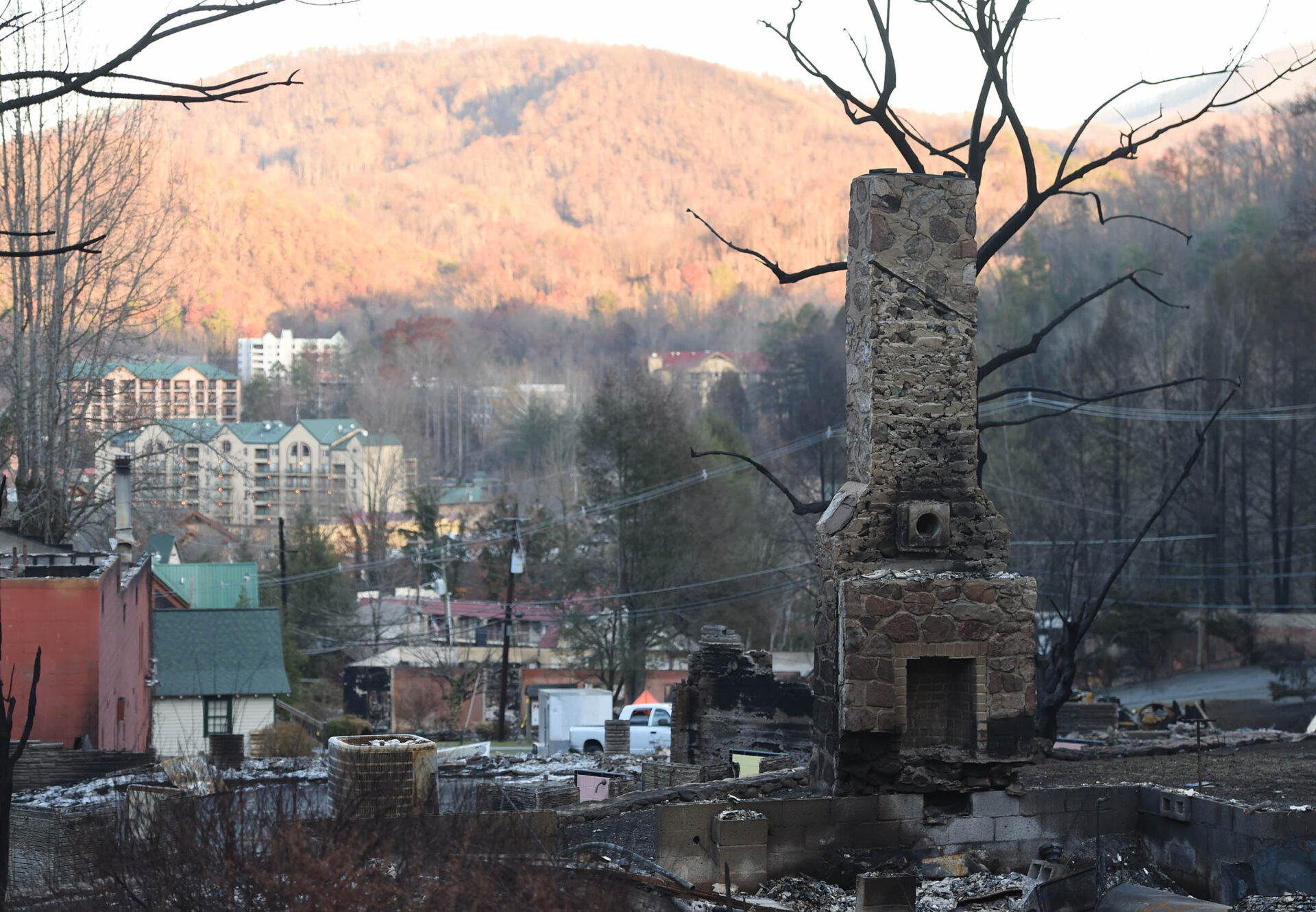In 2016, a wildfire escaped the Great Smoky Mountains National Park. It killed 14 people, injured dozens more and destroyed parts of Gatlinburg and Pigeon Forge. We talk with an investigative journalist who has new information on the incident.
Also, four decades ago rice seeds from Laos crossed the ocean to California and made their way to a family of Hmong farmers in North Carolina.
And the Appalachian trail has been exhaustively hiked, explored and written about, but it’s still got a few secrets left.
You’ll hear these stories and more this week, Inside Appalachia.
In This Episode:
- Investigating The Gatlinburg Fire Of 2016
- The Sweet Sticky Rice Of Western North Carolina
- Save The Salamanders!
- An Appalachian Trail Mystery
Investigating The Gatlinburg Fire Of 2016
In 2016, a wildfire at Chimney Tops in Great Smoky Mountains National Park in Tennessee spread beyond the park boundaries into the nearby tourist towns of Gatlinburg and Pigeon Forge. At least 14 people were killed. Many more were injured and thousands of residents and tourists had to be evacuated.
A new investigation revealed that National Park Service officials underestimated the severity of the wildfire and were slow to alert Tennessee officials about the danger.
Tyler Whetstone, an investigative reporter, spoke with Mason Adams about his reporting.
The Sweet Sticky Rice Of Western North Carolina
Credit: Rachel Moore/West Virginia Public Broadcasting
When you think of rice, you might not think of western North Carolina. But the area is home to several varieties of heirloom rice that made their way here from Laos nearly five decades ago. The rice was carried and cultivated by Hmong refugees.
One family now sells their rice at markets and to restaurants, and they’ve built a passionate following.
Folkways Reporter Rachel Moore has this story.
Save The Salamanders!
Credit: U.S. Geological Survey
Have you ever heard of a West Virginia spring salamander? They’re a species found in the General Davis Cave in Greenbrier County, West Virginia, but there are only a few hundred left.
The U.S. Fish and Wildlife Service wants to put the West Virginia spring salamander on the endangered species list.
WVPB’s Curtis Tate spoke with Will Harlan, a senior scientist at the Center for Biological Diversity.
An Appalachian Trail Mystery
The Appalachian Trail was completed in 1927. For 25 years, hikers took to the trail and traveled along the mountains from Georgia to Maine, but then the trail was moved. And the old trail was nearly forgotten.
Historian and podcaster Mills Kelly discovered the lost trail and wrote about it in his new book, Virginia’s Lost Appalachian Trail.
WMRA’s Chris Boros speaks to Kelly about rediscovering the trail.
——
Our theme music is by Matt Jackfert. Other music this week was provided by David Mayfield, Chris Knight, John Blissard, John Inghram, Eric Vincent Huey and Steve Earle.
Bill Lynch is our producer. Zander Aloi is our associate producer. Our executive producer is Eric Douglas. Kelley Libby is our editor. Our audio mixer is Patrick Stephens.
You can send us an email: InsideAppalachia@wvpublic.org.
You can find us on Instagram, Threads and Twitter @InAppalachia. Or here on Facebook.
Inside Appalachia is a production of West Virginia Public Broadcasting.
